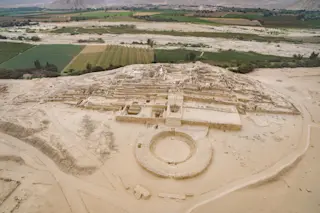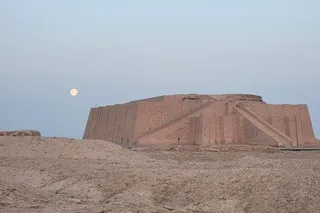On a high, dry terrace overlooking a green river valley in the Andes Mountains of Peru, sits a complex of American pyramids that may be older than the pyramids of Egypt. These structures are remnants of the ancient city of Caral, which some have called the oldest society in the Americas.
Caral was built around 5,000 years ago, give or take a few centuries, according to groundbreaking research published in Science back in 2001. That origin date places it before the Egyptian pyramids in Africa and roughly 4,000 years before the Incan Empire rose to power on the South American continent. That history, and the shear scope of the site, prompted UNESCO, the United Nations Educational, Scientific and Cultural Organization, to dub it a World Heritage Site in 2009.
Caral sits in the Supe Valley, a region of Peru’s high desert nestled between the rainforest, mountains and the Pacific coast. ...














